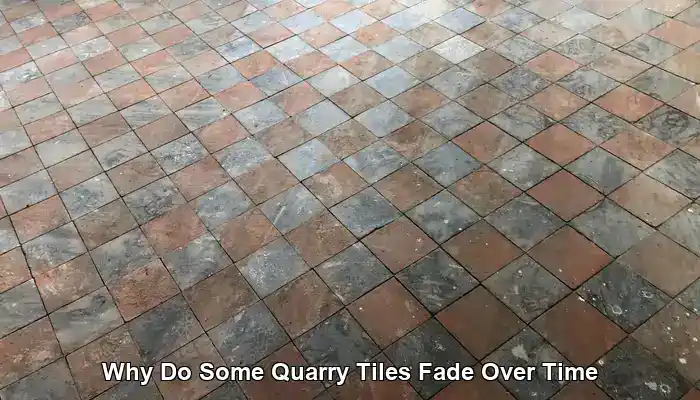
Quarry tiles are highly valued for their exceptional durability, earthy aesthetic, and timeless allure. These sturdy, unglazed ceramic tiles enhance both rustic kitchens and sun-drenched patios, standing strong against heavy foot traffic and challenging weather conditions. Yet, many homeowners and property managers encounter the perplexing issue of gradual colour fading over time—sometimes appearing unevenly or dramatically. This slow change can be baffling, especially when tiles that once shone in vibrant reds, warm browns, or rich terracotta hues become dull, patchy, or washed out.
The gradual fading of quarry tiles transcends mere aesthetics; it often signifies significant underlying wear, environmental strain, or chemical degradation. Outdoors, these tiles endure relentless exposure to environmental elements like rain, frost, and fluctuating temperatures, which can wear down their surface over time. The freeze-thaw cycle can induce micro-cracks and surface spalling, revealing lighter inner layers that have a coarser texture. Conversely, indoor settings present a different yet equally complex situation. High foot traffic gradually erodes the tile’s pigmented surface, unveiling the inner body, often composed of larger particles and differing mineral hues. This layering indicates that once the surface is compromised, noticeable changes in colour and texture occur, leading to an unappealing look.
Beyond physical wear, chemical exposure plays a crucial role in the fading process of quarry tiles. Strong cleaning products, particularly those that are acidic or alkaline, can damage sealers and strip away protective layers. This makes the tile increasingly susceptible to staining, efflorescence (the appearance of white salt deposits that lighten the surface), and soil accumulation in the newly formed pits and abrasions. These intertwined factors culminate in a faded and uneven appearance that detracts from the original beauty and structural integrity of the tiles.
Understanding the causes behind the fading of quarry tiles is vital for preserving their unique character and extending their lifespan. This comprehensive article will explore the environmental, mechanical, and chemical factors leading to fading—both indoors and outdoors—while also offering practical tips for prevention and restoration. Whether you are caring for a historic floor or simply aiming to maintain the beauty of your tiles, this guide will provide insights into the complex science behind the wear of quarry tiles.
Expert Insights: Discover Our Recommended Products for Maintaining and Cleaning Quarry Tiles
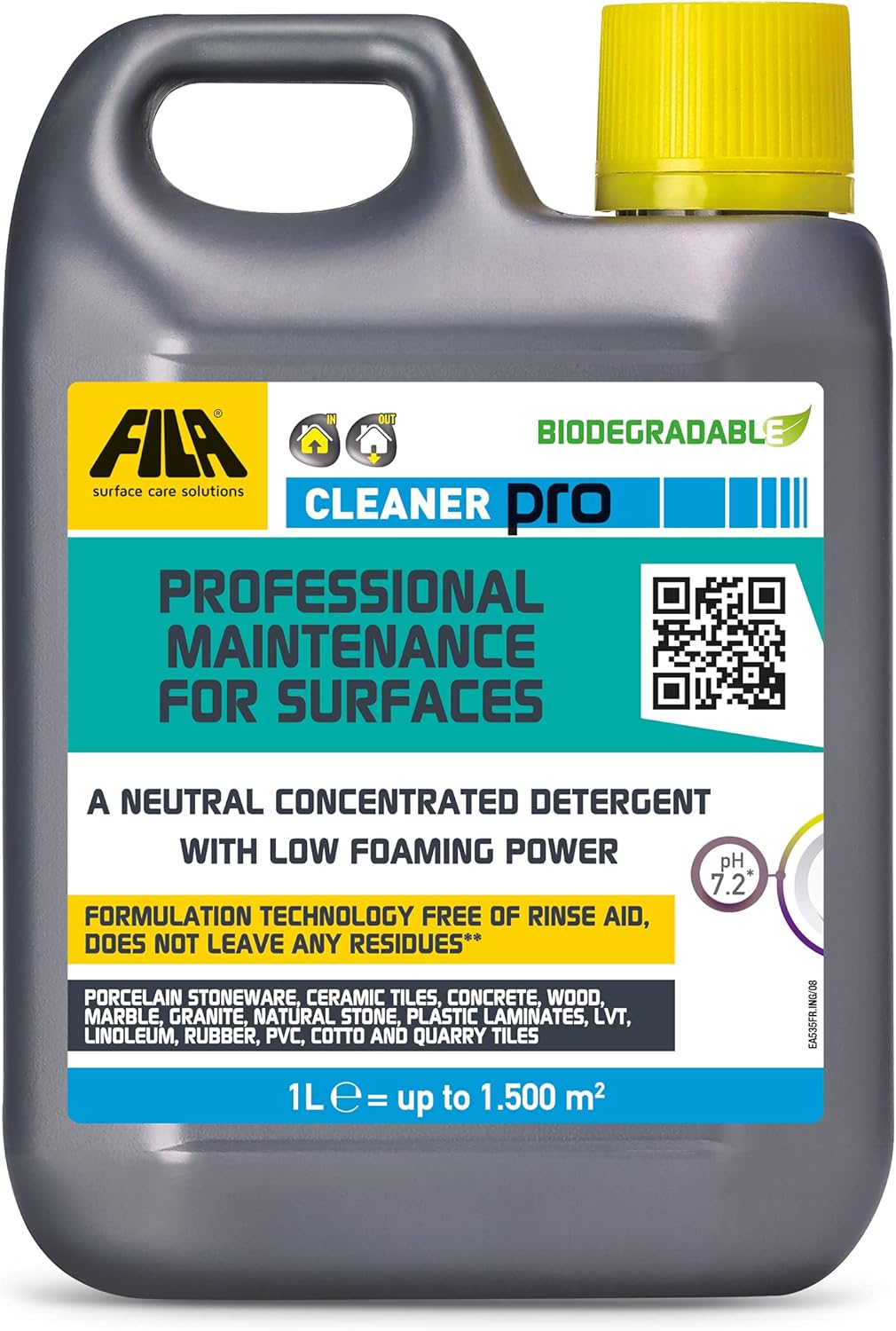
Fila Pro Floor Cleaner
|
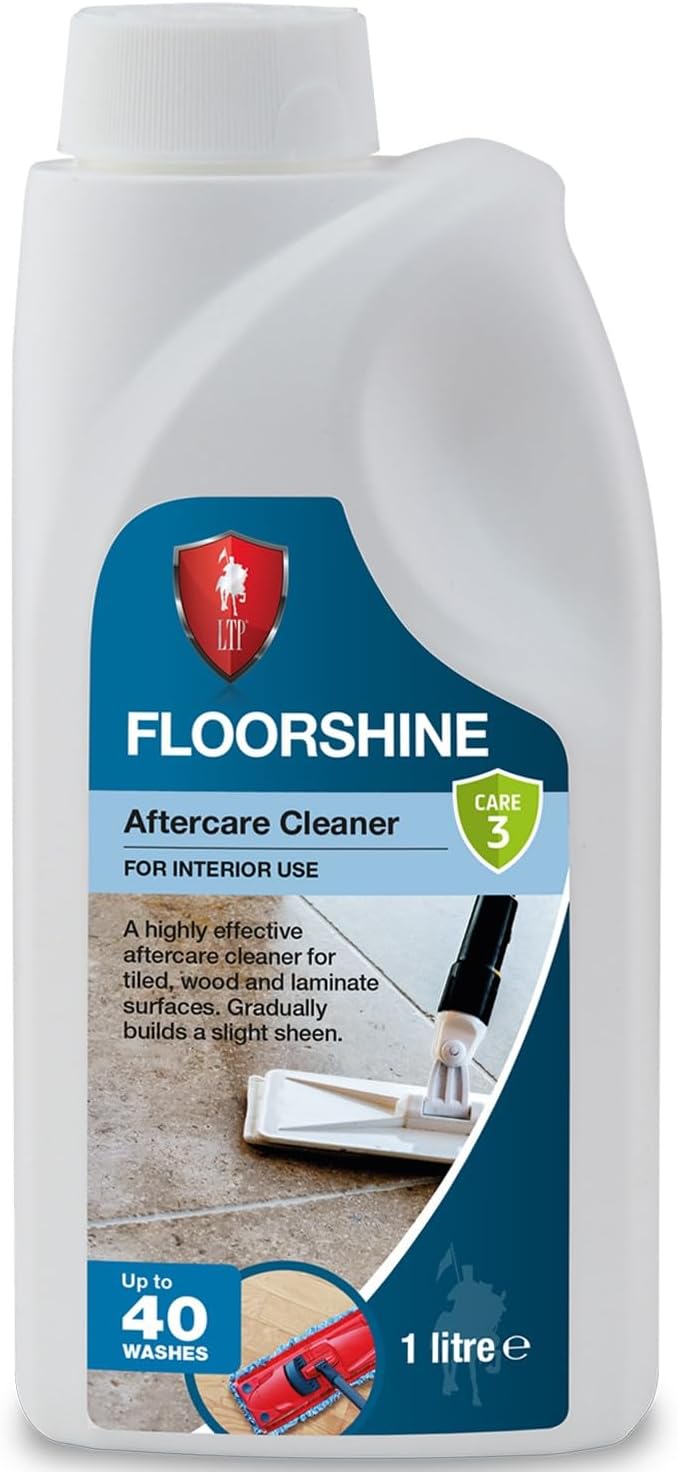
LTP Floorshine
|
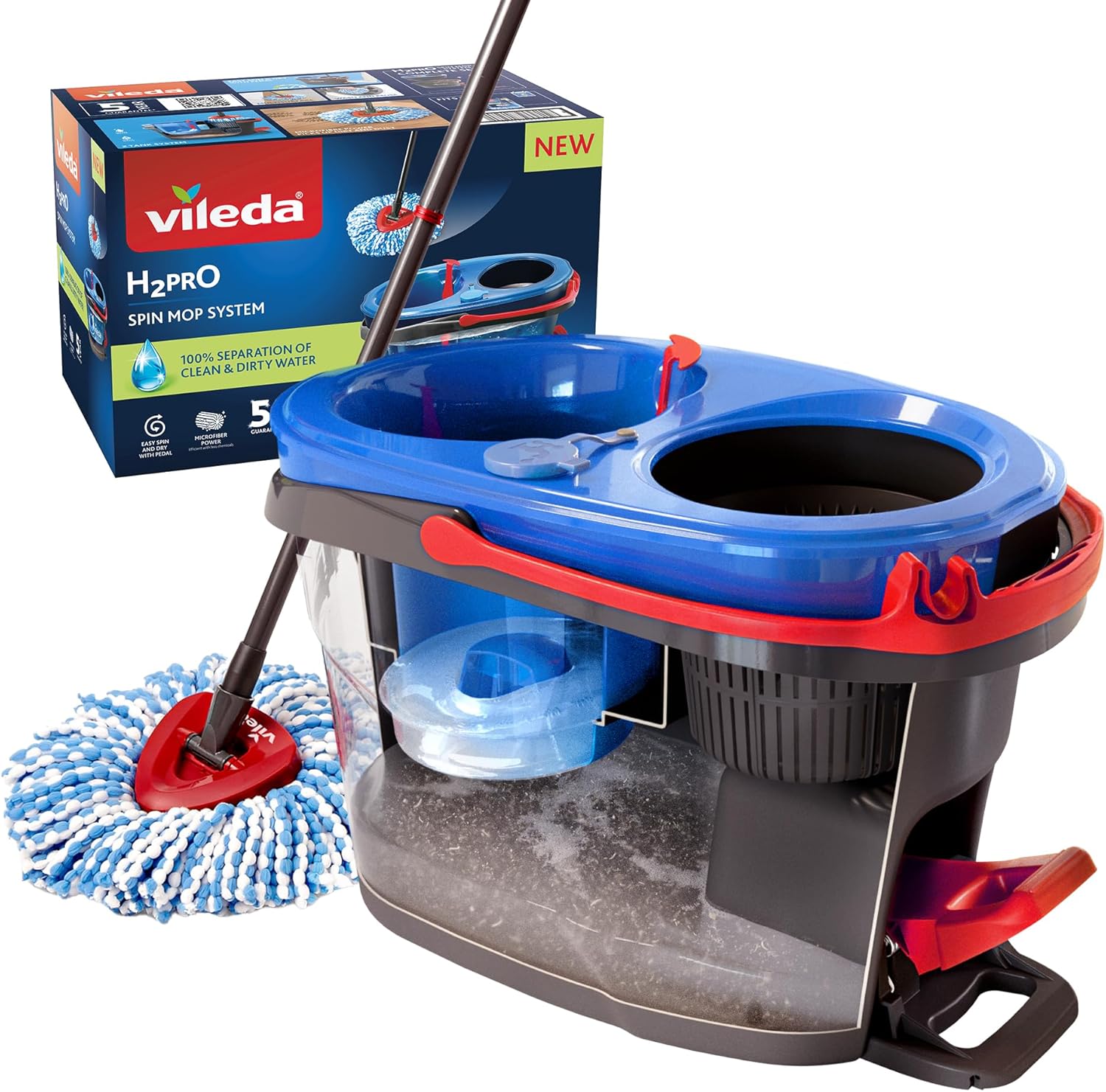
Vileda H2PrO Spin Mop System
|
Examining the Outdoor Factors Leading to Quarry Tile Fading
Quarry tiles installed outdoors are constantly exposed to a variety of environmental stressors that gradually wear down their colour and texture. While these tiles are well-known for their durability, the persistent forces of nature can diminish even the strongest surfaces over time, resulting in a dull and lifeless look.
Evaluating the Effects of Weather on Quarry Tile Colour
Among the most significant contributors to fading is the weather, particularly the impact of rain and freeze-thaw cycles. Rainwater can seep into the porous surface of unsealed or poorly sealed tiles, transporting minerals and contaminants that can stain or leach colour from the tile. When temperatures dip, moisture trapped within the tile expands as it freezes, leading to micro-cracks and surface flaking. This repetitive freeze-thaw process exposes the tile’s inner body, which often contains lighter, less pigmented materials, consequently resulting in a noticeable decline in vibrancy and richness.
Unpacking Surface Wear and Layer Exposure in Quarry Tiles
Quarry tiles are typically designed with a dense outer crust that showcases the most vibrant colour. As this outer layer wears down—due to foot traffic, abrasion, or environmental erosion—the inner layer becomes increasingly visible, which tends to be rougher and consists of larger aggregate particles with a lighter, uneven hue. As a result, this leads to a patchy appearance that lacks the richness and depth of the original surface, significantly diminishing the overall aesthetic appeal and cohesion of the installation.
Investigating the Role of Chemical Damage in Quarry Tile Fading
Outdoor cleaning often requires the use of strong chemicals to eliminate moss, algae, or grime. Unfortunately, these potent solutions can undermine sealers and strip away protective coatings. Once the sealer is compromised, the tile becomes much more vulnerable to staining, mineral deposits, and accelerated wear. Over time, this chemical exposure significantly contributes to fading and surface dullness, greatly reducing the exterior’s overall visual appeal.
Identifying the Indoor Factors Leading to Quarry Tile Fading
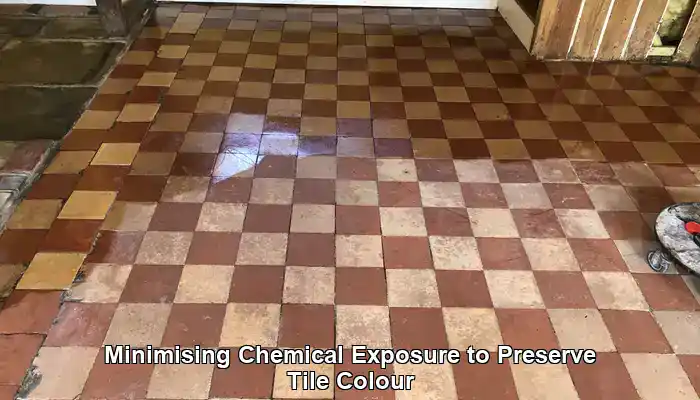
While outdoor quarry tiles face harsh elements, indoor tiles encounter a distinct set of challenges that can be just as detrimental over time. From foot traffic to cleaning methods, the fading of indoor quarry tiles often results from a slow, cumulative process driven by wear, surface breakdown, and chemical exposure.
Managing Abrasive Wear and Crust Loss in Indoor Quarry Tiles
Quarry tiles are constructed with a dense, pigmented outer crust that provides their rich colour and smooth finish. Inside spaces, especially in high-traffic areas like kitchens, hallways, and commercial venues, this crust gradually wears away. As the surface erodes, the inner body of the tile becomes more exposed. This inner layer typically consists of larger mineral particles and possesses a more porous structure, leading to a noticeable alteration in colour and texture. Earth-toned tiles may start to look mottled or faded, with lighter patches appearing where the crust has thinned.
Tackling Surface Pitting and Soil Build-Up in Quarry Tiles
As the surface deteriorates, micro-abrasions and pits begin to form. These small indentations can trap soil, grease, and cleaning residues. Over time, the accumulation of grime in these pits can lead to uneven staining and dullness. Even routine cleaning may not completely eliminate the embedded dirt, resulting in a faded, blotchy appearance. This problem is especially prominent in older floors that have not been adequately sealed or maintained, highlighting the importance of regular upkeep and attention to detail.
Understanding Efflorescence and Mineral Migration in Quarry Tiles
Efflorescence is another critical factor contributing to indoor tile fading. This phenomenon occurs when moisture from beneath the tile rises to the surface, carrying soluble salts along. As the water evaporates, it leaves behind a white, powdery residue that lightens the tile’s appearance and can cause surface damage. Efflorescence is particularly common in areas with inadequate subfloor ventilation or where tiles are laid over damp concrete. If not addressed, it can deteriorate the tile’s surface and complicate cleaning efforts.
Examining the Effects of Chemical Overuse and Sealer Breakdown on Quarry Tiles
Indoor cleaning practices often rely on powerful chemical agents—especially in commercial or food preparation areas. While these products can effectively eliminate grease and stains, they may also strip away sealers and protective coatings. Once the sealer is compromised, the tile becomes more porous and susceptible to staining, wear, and further fading. Acidic or alkaline cleaners can even etch the surface, permanently altering its texture and colour. Over time, repeated exposure to harsh chemicals accelerates the degradation of both the tile and its finish, further exacerbating fading.
Implementing Essential Maintenance Practices to Preserve Quarry Tile Colour
The fading of indoor quarry tiles can often be mitigated with appropriate care. Utilizing pH-neutral cleaners, adhering to a regular sealing schedule, and avoiding abrasive tools can significantly prolong the life and appearance of the tiles. For older floors that display signs of wear, engaging professional restoration services—including deep cleaning, re-sealing, and colour enhancement—can help to revive their original beauty and restore vibrancy.
Proven Prevention and Restoration Strategies for Quarry Tiles
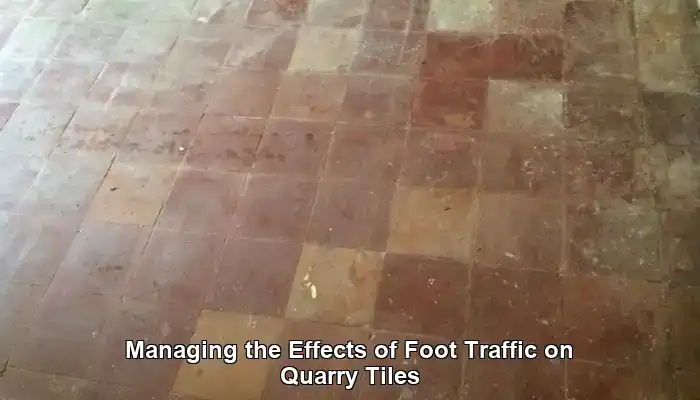
Understanding the reasons behind quarry tiles fading is just the first step—gaining knowledge on how to prevent this fading and restore the original beauty when wear occurs is where true value lies. Whether your tiles are installed indoors or outdoors, proactive care and thoughtful restoration can significantly prolong their lifespan while maintaining their rich, earthy character.
Utilizing Sealing as a Primary Defence Against Fading
One of the most effective methods for preventing fading is to ensure proper sealing. Quarry tiles are naturally porous, and without an adequate protective barrier, they readily absorb moisture, dirt, and chemicals. A high-quality penetrating sealer fills the pores without forming a superficial film, allowing the tile to breathe while repelling contaminants. For outdoor tiles, this is particularly vital to guard against rain, frost, and algae growth. Indoors, sealing helps resist staining from spills, cleaning products, and foot traffic.
Sealers should be reapplied periodically—typically every 1 to 3 years, depending on usage and exposure. A simple water-drop test can help determine when resealing is necessary: if water no longer beads on the surface and soaks in, it’s time for a refresh to maintain optimal protection.
Smart Cleaning Practices: Avoiding Harsh Chemicals for Quarry Tiles
Routine cleaning is essential, but the products chosen for this task can make a significant difference. Harsh chemicals, especially those that are acidic or alkaline, can degrade sealers and etch the tile surface over time. This degradation results in dullness, colour discolouration, and increased vulnerability to staining. Instead, opt for pH-neutral cleaners specifically formulated for stone or tile surfaces. These products effectively lift dirt without jeopardizing the integrity of the tiles.
For stubborn grime or efflorescence, use targeted treatments sparingly and always follow with a thorough rinse. Avoid bleach, ammonia, and vinegar-based solutions, which may seem effective but can cause long-term damage.
Effective Maintenance Techniques to Preserve the Colour of Quarry Tiles
Regular sweeping and damp mopping are vital for preventing soil buildup and surface abrasion. Use soft-bristle brushes or microfiber pads instead of abrasive scrubbers, which can wear down the tile’s pigmented crust. In high-traffic areas, consider placing rugs or mats to minimize direct wear—especially near entryways or kitchen workspaces, where foot traffic tends to be heaviest.
For outdoor tiles, pressure washing should be approached with care. While it can effectively remove surface dirt, excessive pressure may erode the tile or force water into cracks, potentially accelerating freeze-thaw damage. If employed, maintain low pressure and keep the nozzle at a safe distance to preserve the integrity of the tiles.
Professional Restoration Techniques: Revitalising Faded Tiles
When fading becomes evident and routine maintenance proves insufficient, professional restoration can yield impressive results. Restoration experts utilize a combination of deep cleaning, mechanical resurfacing, and colour enhancement techniques to rejuvenate tired tiles.
- <a href="https://limitsofstrategy.com/ceramic-tile-floors-deep-cleaning-the-ultimate-guide/">Deep cleaning</a> effectively removes embedded dirt, grease, and mineral deposits using specialized equipment and solutions designed for tile care.
- Mechanical honing or polishing smooths out worn surfaces and restores texture, particularly on indoor tiles that exhibit surface pitting.
- Colour enhancement sealers can enrich faded tones, especially in earth-toned tiles, by deepening the natural pigments without creating a glossy finish that may detract from their aesthetic appeal.
In cases of severe wear, restoration may also involve regrouting, tile replacement, or applying protective coatings tailored to the specific environment of the tile.
Creating a Long-Term Care Plan for Quarry Tiles
Preventing future fading requires a long-term strategy. Establish a maintenance schedule that includes regular inspections, cleaning, and resealing. Educate household members or staff about proper cleaning techniques and the significance of using appropriate products. For commercial settings, consider working with a floor care professional to develop a customized plan that addresses traffic levels and environmental conditions.
If your tiles are part of a heritage property or hold historical significance, it is wise to consult with conservation experts before undertaking any restoration work. Preserving the authenticity of older quarry tiles often necessitates specialized techniques and materials to ensure their historical integrity remains intact.
Final Insights on the Care and Maintenance of Quarry Tiles
Quarry tiles are celebrated for their rugged beauty and enduring charm, but even the most resilient materials are subject to the passage of time. Whether facing harsh outdoor conditions or the relentless wear of indoor foot traffic, fading is a natural outcome of environmental stress, mechanical abrasion, and chemical exposure. From the erosion of the tile’s pigmented crust to the subtle impacts of efflorescence and surface pitting, each cause contributes to diminishing the tile’s original vibrancy.
Fortunately, fading does not have to be a permanent state. With the right knowledge and care—such as regular sealing, gentle cleaning, and professional restoration when necessary—quarry tiles can maintain their colour and character for decades. Understanding the factors that lead to fading empowers homeowners, property managers, and restoration experts to adopt proactive measures that preserve both the aesthetic and structural integrity of these timeless surfaces.
Whether your tiles are part of a heritage property or a modern installation, their longevity hinges on how well they are maintained. By respecting the material and addressing its needs, you ensure that your quarry tiles continue to narrate their story—rich in colour, texture, and history—for many years to come.
Common Questions Regarding Quarry Tile Care and Maintenance
Can faded quarry tiles be effectively restored?
Yes, quarry tiles can often be revitalized through deep cleaning, resealing, or even professional refinishing techniques, depending on the severity of the fading. Homeowners should explore their options for rejuvenating the beauty of their tiles.
What is the recommended cleaning frequency for quarry tiles?
Regular sweeping should be done weekly, with thorough cleaning every few months to maintain their appearance and prevent fading. Establishing a consistent routine will help safeguard the vibrancy of the tiles.
Are there specific sealants designed for quarry tiles?
Indeed, there are specialized sealants formulated specifically for quarry tiles that offer protection against moisture and UV rays, enhancing their longevity and appearance. Homeowners should consult professionals for recommendations on the best products.
Which cleaning products should be avoided on quarry tiles?
Avoid using acidic cleaners, harsh chemicals, and abrasive scrubbers, as these can damage the surface and contribute to fading. Instead, opt for gentle, tile-safe products that will not compromise the integrity of the tiles.
How can I tell if my quarry tiles need resealing?
If water no longer beads on the surface or if the tiles appear dull and stained, it may be time to reseal. Regular checks can help ensure optimal protection and appearance.
Does indoor lighting impact the fading of tiles?
Indirect indoor lighting generally has less effect than UV rays, but prolonged exposure to bright light can contribute to gradual fading. Homeowners should consider lighting options when designing their spaces to mitigate this effect.
Can I use a steam cleaner on quarry tiles?
Steam cleaners can be too harsh for quarry tiles, potentially damaging their surface. It’s advisable to stick to recommended cleaning methods to maintain their integrity and longevity.
Are some quarry tiles more prone to fading than others?
Yes, tiles made from lower-quality materials or pigments may fade more rapidly than those crafted from superior materials. Homeowners should prioritize quality when selecting tiles for their spaces.
Does foot traffic significantly influence the lifespan of quarry tiles?
High foot traffic can cause wear and tear, accelerating fading and increasing the need for maintenance. Homeowners should implement strategies to effectively manage foot traffic, especially in busy areas.
Is it possible to completely prevent fading in quarry tiles?
While it is challenging to prevent fading entirely, regular maintenance, proper sealing, and selecting quality products can greatly minimize colour loss over time, preserving the beauty of the tiles.
The article Why Do Some Quarry Tiles Fade Over Time: A Guide was first found on https://www.abbeyfloorcare.co.uk
The Article Quarry Tiles Fade Over Time: Understanding the Causes appeared first on https://fabritec.org
The Article Understanding Quarry Tiles: Why They Fade Over Time Was Found On https://limitsofstrategy.com
The Article Quarry Tiles: Reasons for Their Fading Over Time First Appeared ON
: https://ad4sc.com










No responses yet